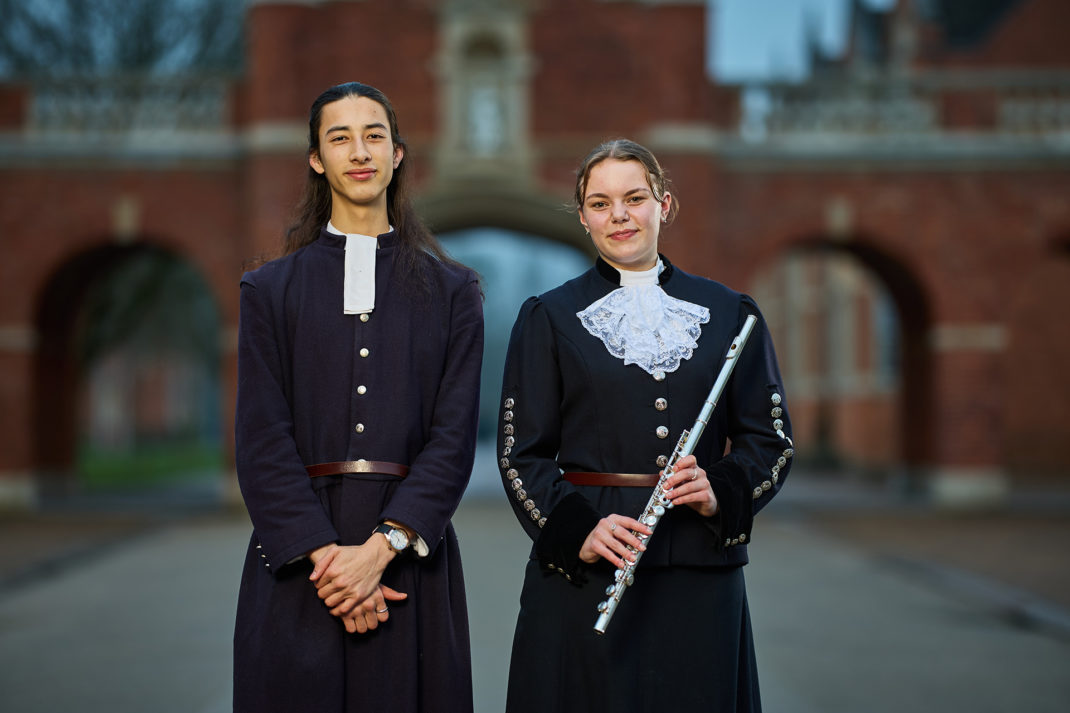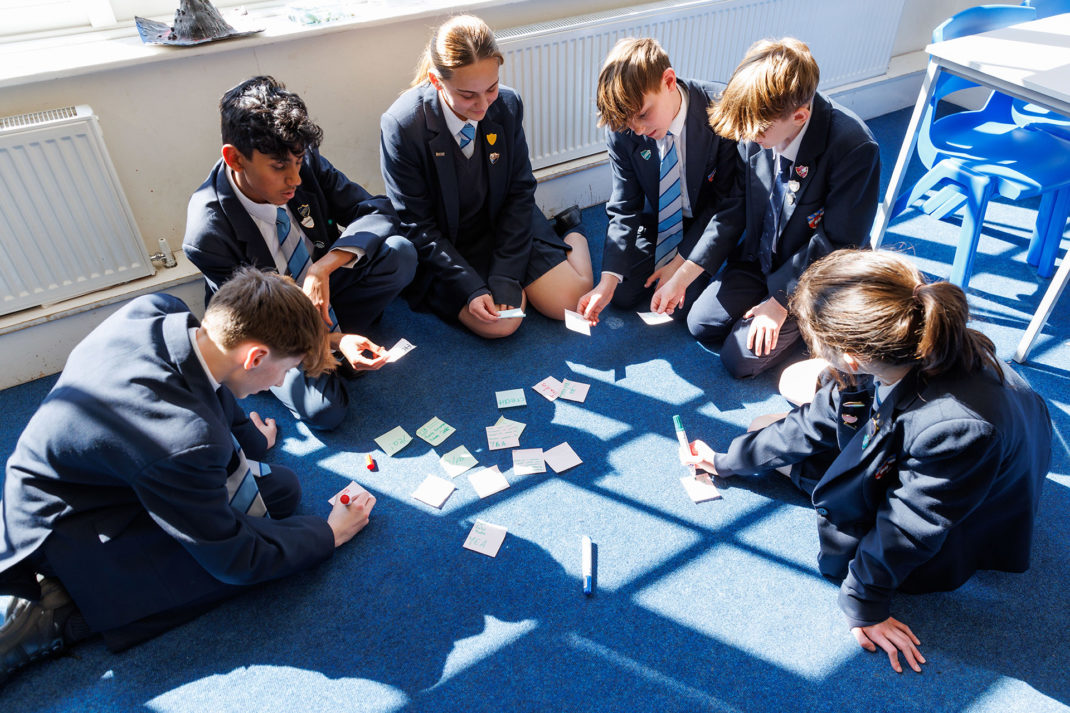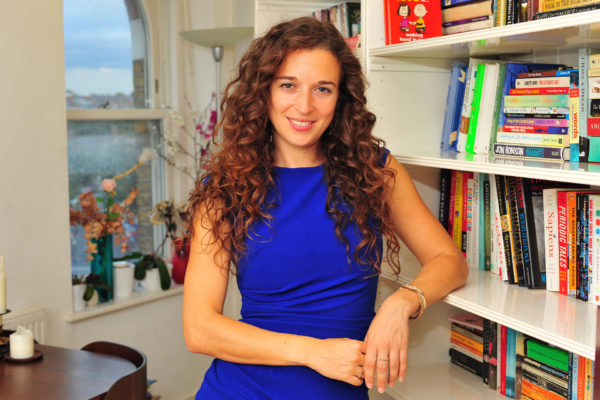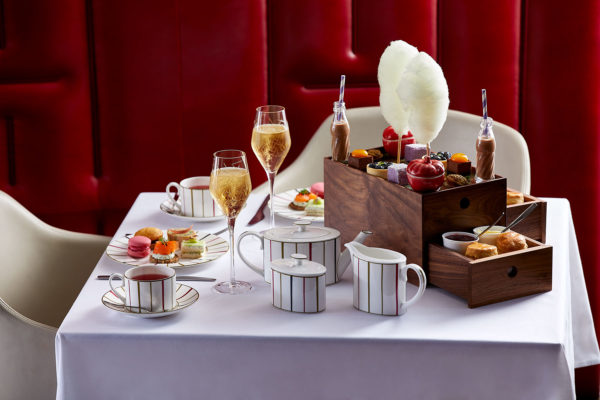Summer Holidays: A Trip To Málaga
By
2 years ago

Exploring the Andalusian heritage of Pablo Picasso’s Málaga means giving into art, beauty and breakfast, says Victoria Lambert
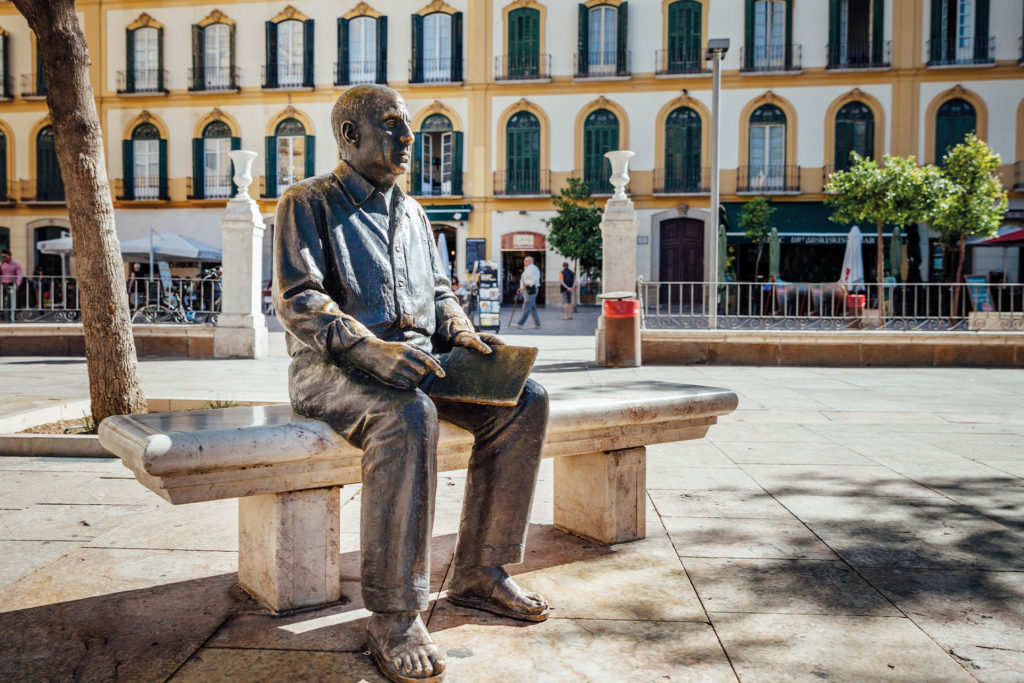
Walking in the footsteps of Pablo Ruiz Picasso can take you to some of Europe’s favourite destinations: Antibes, Paris, Barcelona. But to understand the Master of Cubism there is no better place to start than his birthplace, Málaga– with its sharp sunlight and long history of changing civilisations.
Here, tucked between Roman remains and the Renaissance cathedral, you can see both the house of his birth and, just 200m away, visit the Museo Picasso Malaga on the Calle San Agustín, which prizes some of his last work, a gift from the family to the city.
And in the dusty Plaza de la Merced, fringed with jacaranda trees, you can even pose with a bronze statue of the artist himself by Francisco López Hernández.
This small area was home to Picasso for the first 10 years of his life; his nursery school was in the same road, as was his father’s painting studio, where the artist himself began to draw.
But Málaga offers more to the art lover than Pablo; quite rightly, it now dubs itself the City of Museums, with about 40 exhibition spaces and galleries. These range from ancient to modern, with one of the current highlights, a brightly coloured glass-box Pompidou ‘pop-up’ at the harbour itself, in situ until 2025. The Van Goghs, Goyas and Durers of the Carmen Thyssen-Bornemisza Collection are unmissable – as is the Museum of Automobiles and Fashion, with its collection of Ferraris, Aston Martins and hats. But you could also stop at the Museum of Flamenco Art, or the Museum of Bullfighting. The high end commercial galleries and areas of street art are worth a visit, too.
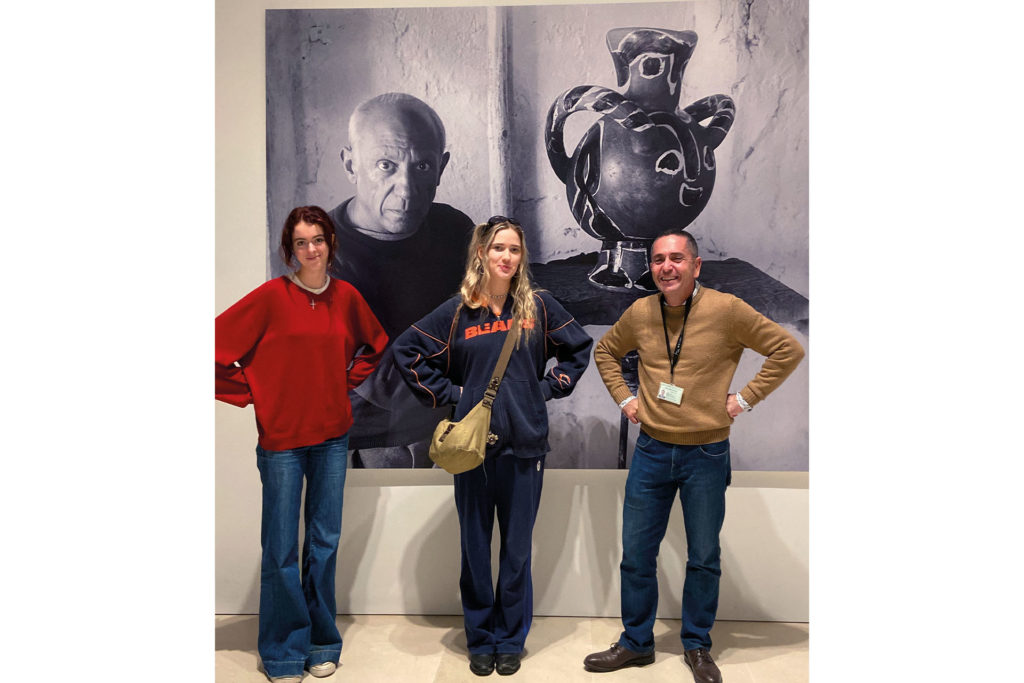
Definitely a time for reappraisal then, especially for those used to seeing Málaga as an airport, a sort of gateway to Andalucia, for the wide sandy beaches and rugged mountains. Visiting out of season, too, is always a smart choice; still T-shirt weather but fewer crowds and shorter queues for the dreamy turrón ice cream at Casa Mira (the city’s most famous ice-cream parlour, established in 1842).
Best of all, Málaga is compact, meaning you can fit a lot into a weekend away. Our own three-day break, leaving chilly Gatwick early to make the most of some winter sun, began with a private tour of the city and the Museo Picasso; guide Julián was perfect. A native Malagueño, he was full of anecdotes as well as information.
Beginning at the port, near the Pompidou, we took a look at the city as a sailor might see it first: tall sandy-coloured buildings, blending back into the hillside, where the two huge citadels, the reddish-stone Alcazaba and ruined Gibralfaro, remnants of Moorish rule, dominate the bright blue sky.
First settled in 1,000 BC by the Phoencians, the port has been home successively to Greeks, Carthaginians, Romans, Visigoths and Moors. It was only in 1487, that Ferdinand and Isabella – the Catholic monarchs who united Spain – conquered Málaga, and the city began to evolve into its modern form.
From our next vantage point at the very top of the town, the terrace of the Mirador del Gibralfaro, the whole of Málaga stretches out before you – the red tiles of the hexadecagon-shaped Plaza de Toros de La Malagueta and its yellow sand centre a particular highlight – to the edges of the Mediterranean. On the clearest day, it is possible to see Africa from here; be warned, Julián has seen it only two or three times in his life, though, so no guarantees.
What cannot be seen but is just as much a part of Málaga’s past as its beautiful ruins is the more recent history of its place in the Spanish Civil War. A Republican stronghold, the city was taken by the Nationalists; they executed 4,000 Andalucians in the city and killed many more who were fleeing, bombing them as they ran. Later the bullring was used to house prisoners of war.
The advantage of touring with a guide is the additional knowledge they bring; Julián told us of how divided families were, even his own, with brothers turning on each other. It felt like a privilege to learn about Málaga from such close quarters.
Stories of the war remind us of Guernica, one of Picasso’s most famous works, inspired by the carpet bombing (or blitzkrieg) of the eponymous village by German planes, in the Basque region.
Málaga’s museum may not have Guernica – which is housed in Madrid – but it can boast a comprehensive array of his work, from early realist pieces painted as a young artist to the blue, rose and African periods, Cubism, Surrealism and later work. There are sculptures, ceramics and drawings too.
We are haunted most by one of his last paintings; a self-portrait of Picasso no longer able to go to the beach, his eyes both old and young, and so full of sadness.
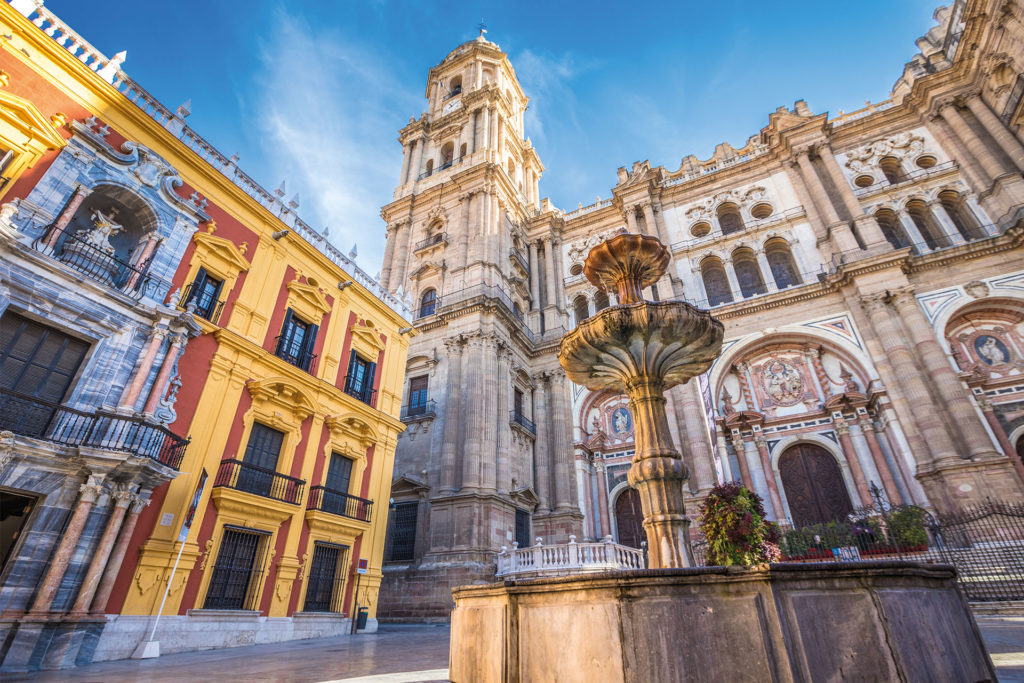
Outside the museum, once again, and Málaga thrums with life: music, restaurants and theatre. Málaga’s second most famous son is actor Antonio Banderas, who keeps a penthouse about the city, and inspired the refurbishment of the city’s iconic Alameda Theatre to become the Teatro del Soho CaixaBank. Banderas is closely involved and has directed and appeared in productions here. He also part owns the tapas bar El Pimpi, a local institution, which is well worth a visit. Housed in old converted stables and cellars it is decorated with barrels signed by visiting politicians and stars, the walls plastered with bullfighting posters.
Our heads full of culture, it seemed only fitting to make for the Anantara Villa Padierna Palace in Marbella, which is a “museum hotel” – and contains more than 1,200 works from sculpture to ceramics to paintings old and new. The pink-hued palace – named for the owner’s father-in-law, the dashing former motor-racing driver Count de Padierna – is grand, built in a mixture of architectural styles, and surrounded by three championship level golf courses.
But it’s still surprisingly intimate with plenty to do. Indeed, if you can’t face the hustle and bustle of Marbella town itself, there really isn’t any need to leave.
For starters, there is the spa – the best in Spain according to the World Spa Awards – with its 2,000 sq/m of Roman baths and multiple steam and sauna rooms, plus a heated indoor pool, fully equipped gym and range of treatments and water therapies.
Putting in the hard work, we tried out the range of steam rooms and icy plunge pools, plus manicures and massages, and even the hair studio. All were judged excellent by teens and mothers alike.
For foodies, the hotel rises to another level. The breakfast buffet is renowned for its range and the length of time guests – wrapped lovingly in cashmere blankets against the gentle wind – linger over organic, home-grown vegetables, the honey from its own hives, locally made goats cheese or freshly sliced jamón.
But you have to make room for lunch from the poolside cafe La Pergola, which offers healthy fare – salads and dips – as well as cocktails.
And then after a siesta in a wide comfortable bed, with a view over the mountains or even to Gibraltar, comes the main event: dinner in La Veranda, an exquisite gastronomic experience. Choose from red tuna tartare or foie gras for a starter, sea bass, lobster or chateaubriand for main courses, do not – I implore you – miss the soufflé desserts, and expect extraordinary amuse-bouche, and later trios of chocolate puddings to have with coffee. The wine list is long and impressive, but we were happy to go with recommended glasses to match the courses. In every area, the service at the Palace is impeccable, informed and warm.
If you wake up ready for more action, the sea is still only five minutes away – and the hotel has a beach club. But you can also hop on a shuttle to the racquet club for tennis, padel or croquet. And dipping into its heritage further, the hotel can organise trips to see the world’s best flamenco dancers, cookery lessons, olive oil or wine tastings – and a day trip to Ronda in the mountains, home to the Puente Nuevo bridge, which spans the Guadalevín River, and one of Spain’s most photographed sites.
But a weekend only lasts so long. Luckily the airport is just 50 minutes away so we eke out every last minute by the pool, plotting our return to the museums, and another crack at that breakfast.
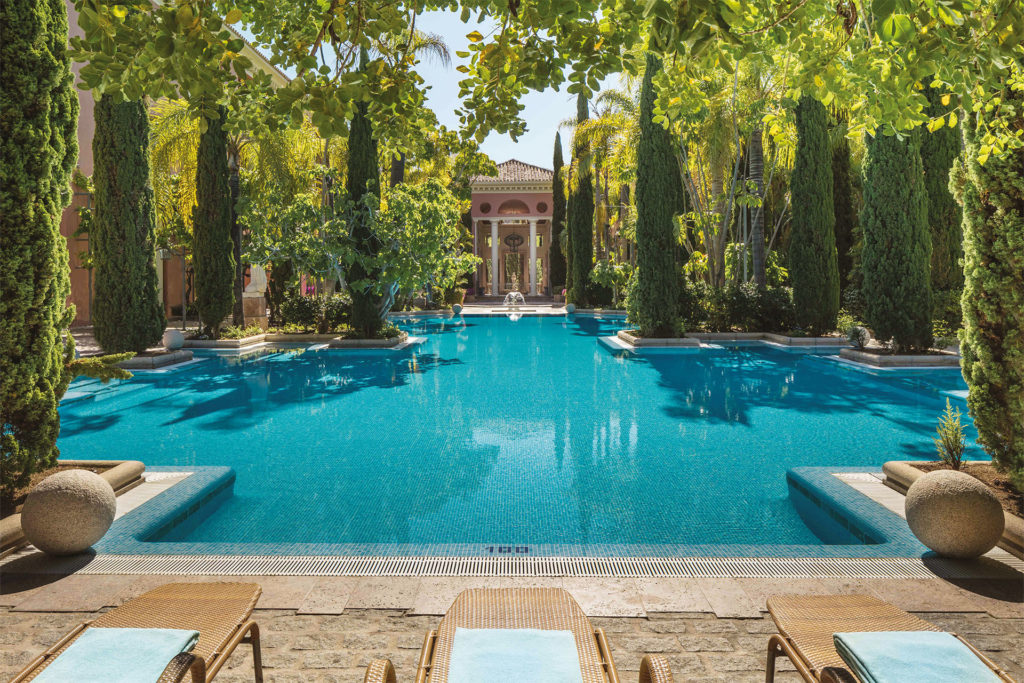
Book it
The Anantara Villa Padierna Palace, Urb. Los Flamingos Golf – Ctra. de Cádiz, km 166, 29679, Marbella, Málaga.
Suites start at about €580 a night
(including breakfast).
(+34) 952 889 150; [email protected]; [email protected];
villapadierna.anantara.com
Museo Picasso Málaga
is open every day, from 10am to 6pm; tickets cost €9.50. A group guided tour costs €85 in English or French + tickets.
For more information and booking: [email protected]; museopicassomalaga.org

